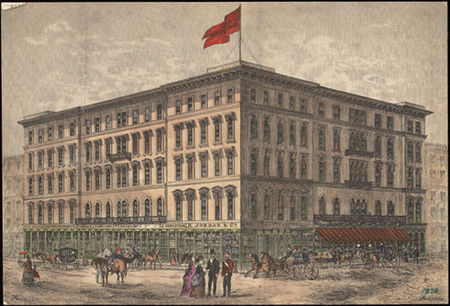Rossin House Hotel

Rossin House Hotel was a mid-19th century hotel located at the southeast corner of King Street and York Street in Toronto, Canada. The original structure was built in 1856 and was destroyed by a fire and re-built in 1863. It was one of the city's pre-eminent hotels, with one 1866 guide claiming, "What the Fifth Avenue Hotel is to New York, and the Windsor is to Montreal, so the celebrated Rossin House is to Toronto."The five-storey hotel was renamed the Prince George Hotel in 1909 after the future monarch, George V. It was demolished in 1969 to make way for the architect Mies van der Rohe's Toronto-Dominion Centre, with the corner being further developed in 1984 for The Standard Life Centre.
Excerpt from the Wikipedia article Rossin House Hotel (License: CC BY-SA 3.0, Authors, Images).Rossin House Hotel
King Street West, Old Toronto
Geographical coordinates (GPS) Address Nearby Places Show on map
Geographical coordinates (GPS)
| Latitude | Longitude |
|---|---|
| N 43.6478 ° | E -79.383 ° |
Address
Standard Life Centre
King Street West 121
M5H 3T9 Old Toronto
Ontario, Canada
Open on Google Maps








